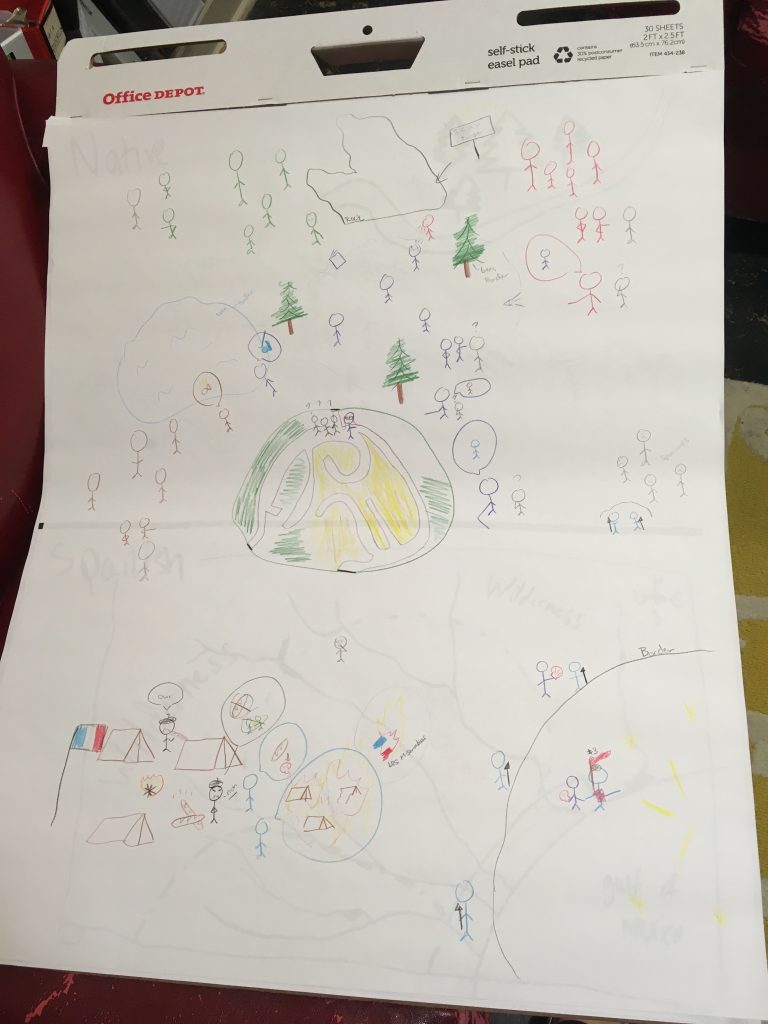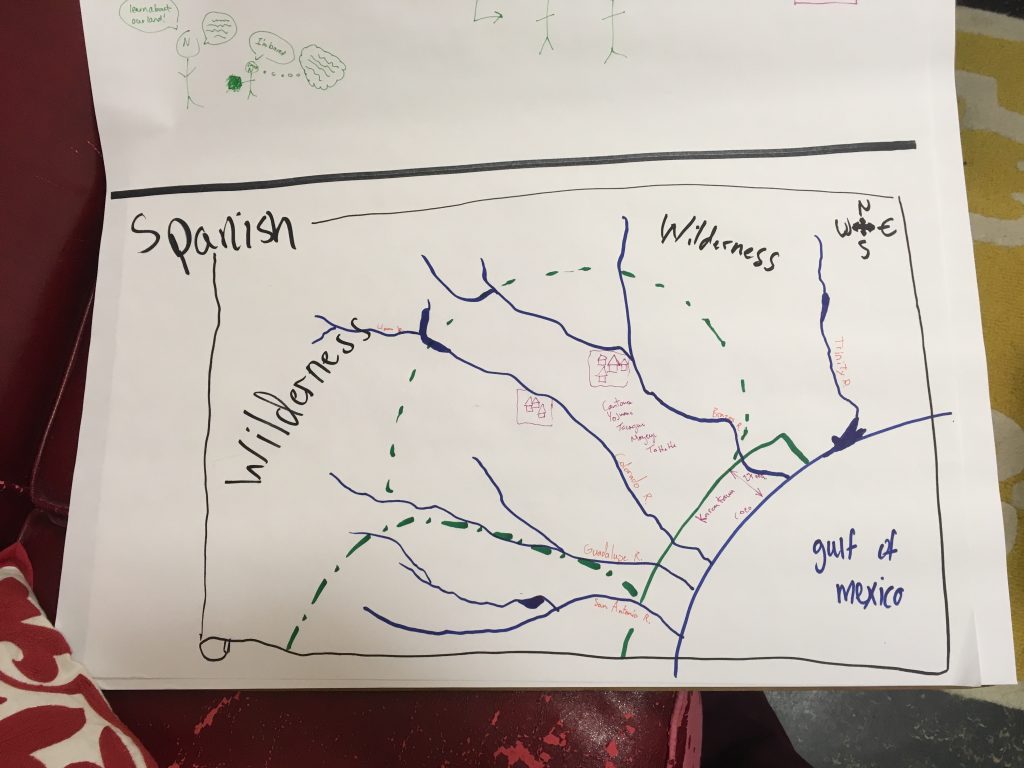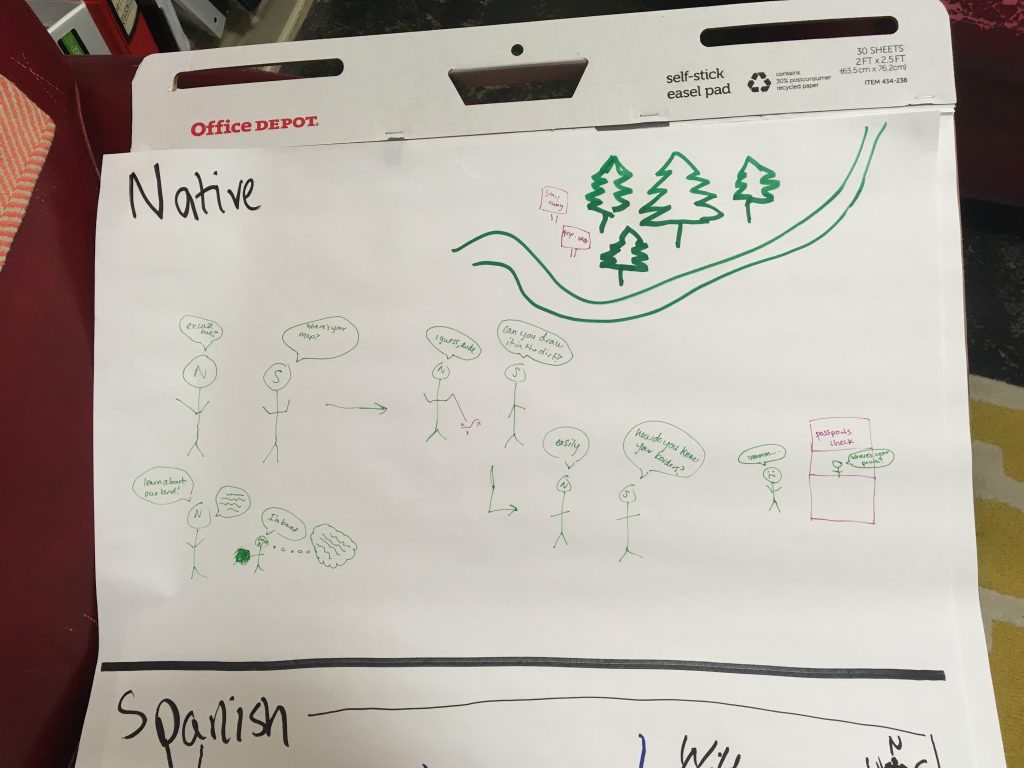The Art of the Draw
On Monday, the students in my Introduction to Native and Indigenous History course read Julianna Barr’s William and Mary Quarterly article about mapping borders in the region currently known as the American southwest. It’s a fantastic article, full of amazing detail about the ways in which Spaniards, the French, and Native people variously conceived of mapping, borders and territory, but it’s a lot for intro-level students to process.
So I had everyone draw their response

The students got into a pair groups, and I gave each group a large, poster-sized post-it and access to a host of markers. My instruction was to render what they’d learned visually. I explicitly said that they could not simply write words on their piece of paper and call it a visual representation; they had to come up with a way to convey information without using words at all. I gave the class about 40 minutes to make their visual aid, and floated between groups nudging them to consider things that they perhaps hadn’t on their own.

There were a lot of reasons I wanted to do this class activity. First, it’s fun. Making posters – especially when it’s clear that the point is not to be a great artist, but simply to communicate ideas – is just plain fun. Second, the activity prompted students to retrieve knowledge. While most groups did pause to look at their notes at some point during the process of making their poster, most of their work was done without looking back at the article. The practice of retrieving knowledge helps things to stick in our memory, and it has the added bonus of boosting self-esteem – students realized they do know the most important points of what they read. Lastly, by applying their knowledge – taking it and transforming it into images – the information sticks.

The posters were great! None were exceptional works of art, but they all conveyed the central points of Barr’s thesis, and did so in inventive and different ways. But what was just as important was what the students struggled to convey – the fact that boundaries and borders existed in oral tradition for Native people; that Native people spoke those things into existence, and while they could draw a map for the Spanish if the Spanish needed it, they themselves did not. This tied back to a lot of conversations we’ve had about what historians too often leave out of writing Native and Indigenous history, and to our discussions of space and time existing in ways western cultures don’t often acknowledge.

This sort of project crops up in all my classes at some point. It doesn’t matter what the text is – having to take the information from within it and apply it to a new task always helps my students to better comprehend the reading and analyze it more deeply. It works with primary sources as well as secondary, and you can make the process as extravagant or as stripped down as you want. (Students could draw on their own in a notebook; students could also get scissors and colored paper and glue and other materials to make a poster.) It’s also a great way to do formative assessment – you can quickly see which points students have grasped and where they may have misapprehended something.

Once the posters were finished, we gathered as a large group and processed what was challenging about the exercise and what came easily. Everyone got to see everyone else’s work, and there was genuine interest in how people had interpreted the text. It made the 70 minutes fly by, and I’m looking forward to today’s crowd-sourced recap of Monday’s activity (another act of retrieval).